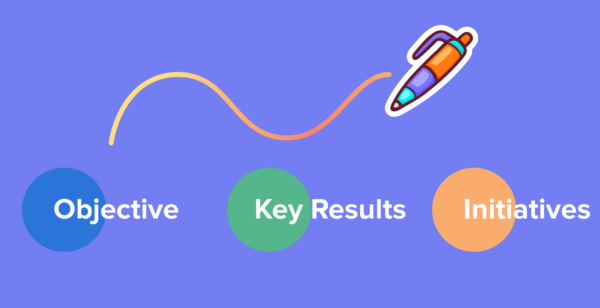OKRs (an acronym for Objectives and Key Results) is a popular goal-setting framework that creates a straightforward tool to help teams get concrete results. With the right OKRs, teams can align their efforts towards achieving common objectives while ensuring that everyone is working towards the same end goal.
However, the process of writing OKRs can be daunting, especially if you are new to the framework. But it’s more than just office jargon – this easy-to-use outline will keep your objectives well-defined and your key results achievable.
Step 1: Define your objectives
Key terms: Measurable, realistic, team-informed
The first step in writing effective OKRs is to define your objectives. Ultimately, they should be specific, quantifiable, and attainable. They should also be relevant to your team or organization’s overall value system. When defining objectives, it’s important to focus on outcomes or results rather than activities or tasks. What you want to achieve should be the cornerstone of your OKR, and all team members or stakeholders should be invested in the outcome.
For example, if you’re on a marketing team, your general objective might be to increase website traffic by a certain amount by the end of the quarter. But make sure that you clearly define your objective – if you make it too vague, you might be unable to reach it easily. Using the SMART framework to spotlight and magnify essential parts of your objective can also be helpful.
Step 2: Identify your key results
Key terms: Consistent, goal-oriented, flexible
Once you have defined your objectives, the next step is to pinpoint your key results. Key results are detailed milestones that help you track progress toward your objectives. With every key result achieved, you will get closer to your objective. They should be challenging but realistic, and they should also be quantifiable so that progress can be tracked easily. For every objective, you should have around three to five key results.
Using the example of a marketing team again, some key results for increasing website traffic might be:
- Increase organic traffic by 10% through search engine optimization (SEO)
- Increase referral traffic by 5% through social media marketing
- Increase direct traffic by 5% through email marketing campaigns
Step 3: Set priorities
Key terms: clear, mutual, crucial
After identifying your objectives and key results, you’ve got to set some priorities. Not all objectives and key results are created equal, so it’s important to put things into context by making a chronology and highlighting important items. Prioritizing objectives and key results will help you allocate resources correctly and ensure everyone is aligned toward achieving the most important goals.
When setting priorities, your team must consider factors such as impact, urgency, and feasibility. You should also consider the resources available to you and any constraints that might prevent you from achieving certain objectives. Additionally, communicating those priorities and making sure that all team members are in agreement about what action items are significant is vital.
Step 4: Assign accountability
Key terms: communication, transparency, delegation
Once you have set your priorities, the next step is to assign accountability. This means identifying who is responsible for achieving each objective, key result, goal, and sub-goal. Setting responsibilities ensures that everyone knows what they are responsible for and that there is clear ownership for every part of the process.
When assigning accountability, it’s important to consider factors such as skills, experience, and availability. You should also consider how each individual’s role and responsibilities align with the overall objectives and key results. In the aforementioned marketing team, this means that the team should identify subject matter experts in various areas, such as SEO (which may include, for example, incorporating link-building outsourcing) and social media marketing, then assign goals accordingly.
Step 5: Monitor and adjust
Keywords: Pacing, adaptability, creativity
The final step in writing effective OKRs is to monitor and adjust as the process goes along. OKRs are not set in stone, and the ability to pivot should be built-in. While objectives can be tweaked if they’re too ambitious, key results should also be reviewed and adjusted regularly to ensure they remain relevant and achievable. Monitoring progress towards your objectives and key results will help you identify any areas where you are falling behind and adjust as needed.
When monitoring progress, it’s important to use data to track progress toward each key result. This will help you identify areas where you need to focus more attention and resources. You should also review your objectives and key results regularly to ensure that they remain relevant and achievable.
Pro tip: Consider using an online OKR software to bring all of this data in one platform and visualize progress towards your objectives and key results.
Your ideal OKRs need the ideal toolkit
Writing effective OKRs requires careful planning, prioritization, and examination. And with so many moving parts, you need the right goal-setting software to ensure your team or organization is on track to succeed. With a program like Hive Goals that helps monitor goal advancement, notify teams about progress, and automate some of the most routine tasks, you can be aligned in the service of achieving common goals and keeping all your responsibilities in check.
Remember, OKRs should be challenging but achievable – so using software that eliminates office housework can clear room in your schedule to focus on the important things.





